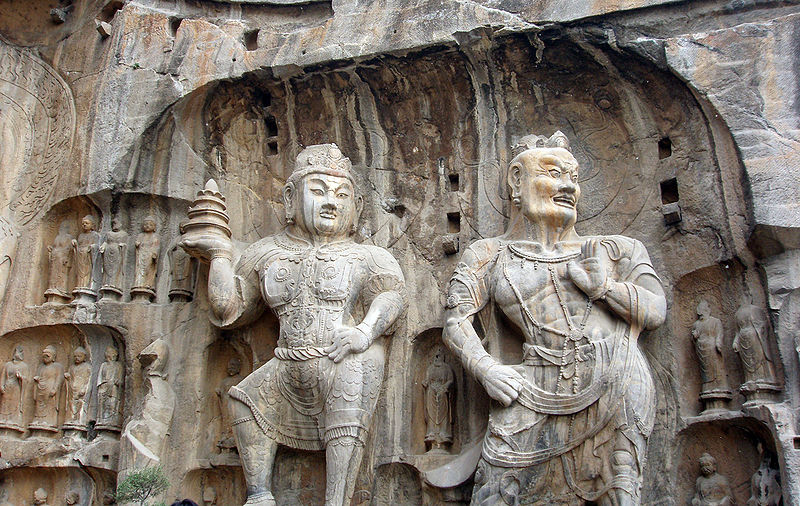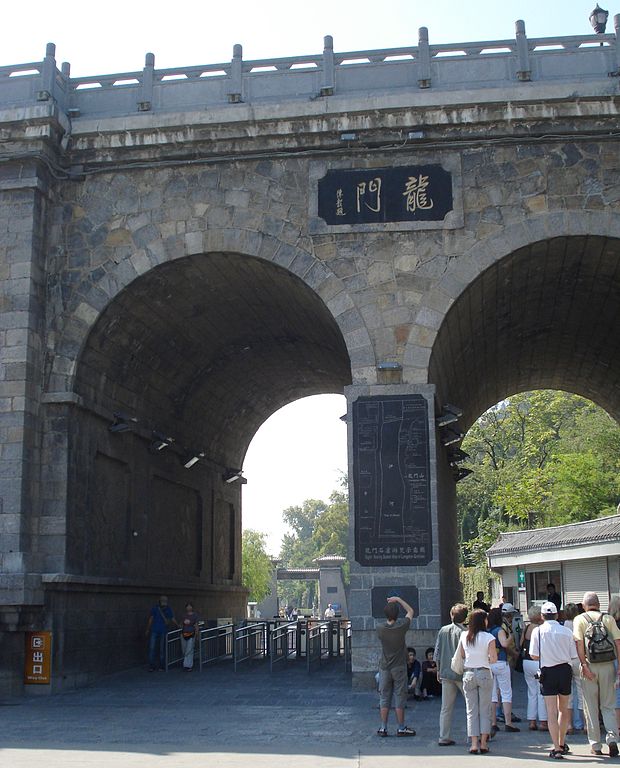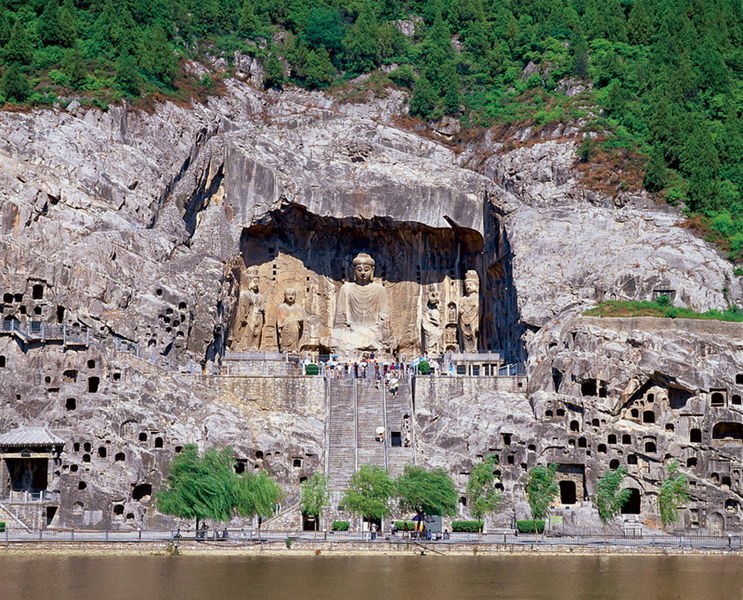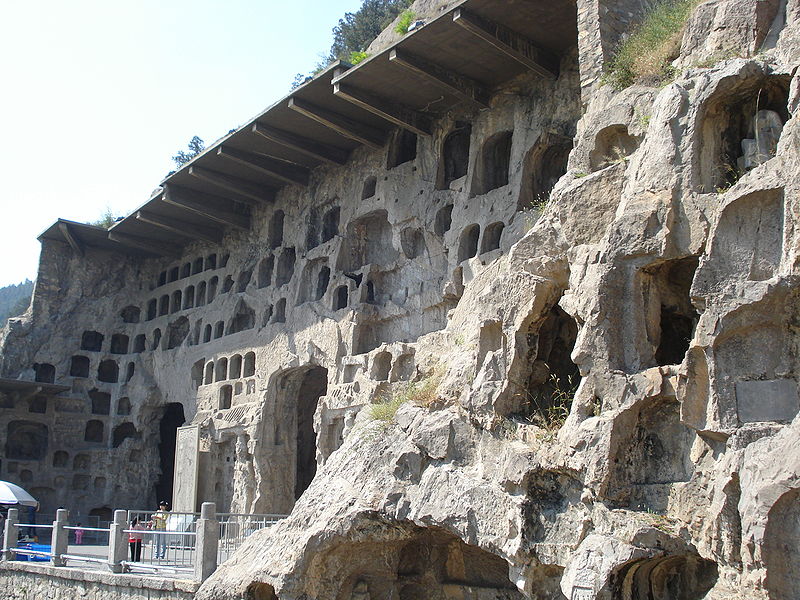Longmen Grottoes
Longmen is a temple cave located on the territory of two mountains of China. The total length of the caves is about one kilometer along the mountainside. The temple complex got its name due to the similarity of the mountains located opposite each other and the river flowing between them with the gate – Longmen means "Dragon Gate".
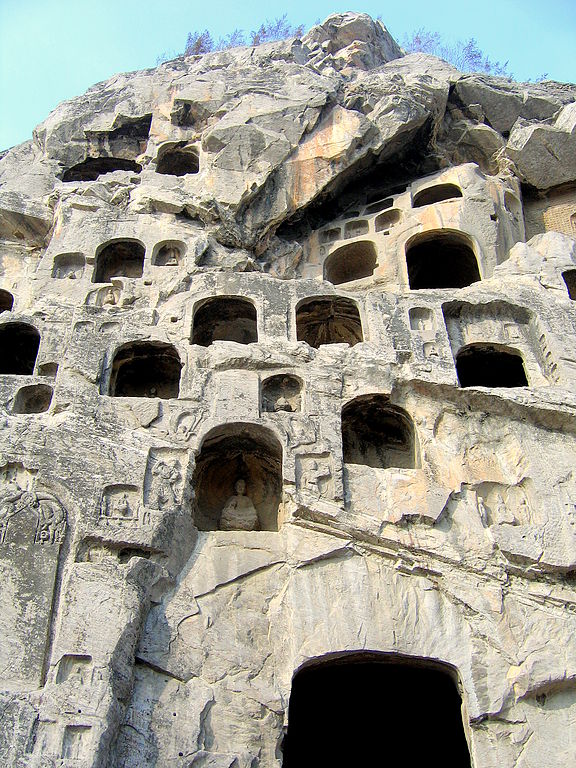
The construction of the cave temple began in the fifth century A.D., reaching its dawn under the rule of the Tang Dynasty. Tang sculptures were more lively, depicting ordinary people. More than 100 thousand stone statues, about 3 thousand tablets with inscriptions, and more than 2 thousand niches were erected. From a distance, the Longmen Caves look like honeycombs.
The most important attraction is the Buddha statue, towering 17 meters in height. The smallest figure is a two–centimeter-tall Buddha.
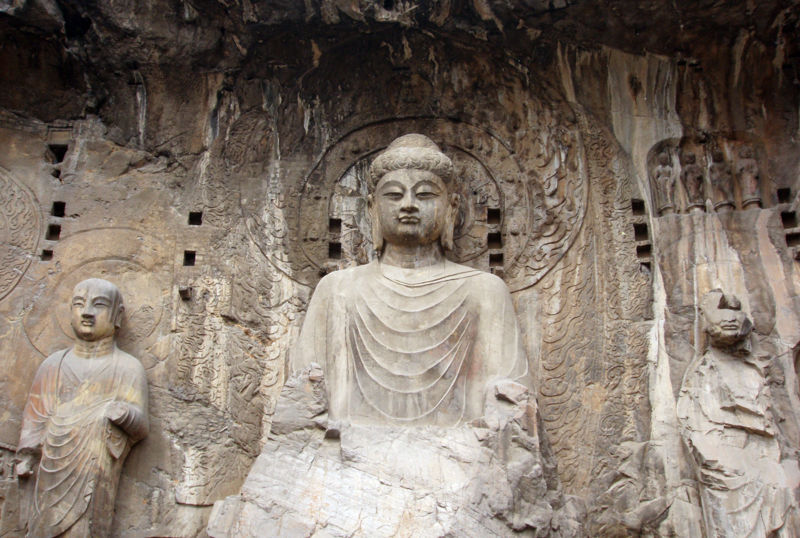
The territory of Longmen is divided into four sections. The first one is located on the western side of the Yihe River and is the most important element of the museum complex. Binyan Cave, consisting of three caves, is located in front of the entrance to the territory. It is one of the earliest buildings. In the center is a Buddha figure dressed in a simple robe. Further on, there are a number of grottoes, of which the grotto of the Lotus Flower stands out. The main decoration of the ceiling is lotus flowers, made with the help of carvings. At the head is a headless Buddha. In the grotto of Medical prescriptions, all the walls are painted with recipes for the preparation of medicines. The following masterpiece is interesting - the grotto of Ten Thousand Buddhas, in which many small statues of the deity are carved, and in the center stands the Buddha in the lotus position.
The second part of the temple complex is occupied by caves located on the eastern bank of the river. The most famous is the Grotto of Prince Gaolin. Unfortunately, many sculptures have not been preserved to this day. Some of them are represented without some body parts – arms or head.
The third site houses the Xiangshan Buddhist Temple, which consists of several pavilions. It was built in the 18th century. The main attraction of the temple is the monument to the Qianlong Emperor, cast in bronze. There is a goldfish pond on the territory.
The final part of Longmen is the grave of the Chinese poet Bo Jiuyi and his mother's estate, where there is a house, garden, ponds with blooming lotuses, enchanting the eye with their beauty.
Longmen is one of the three most important temple complexes in China and on the UNESCO World Heritage List.
